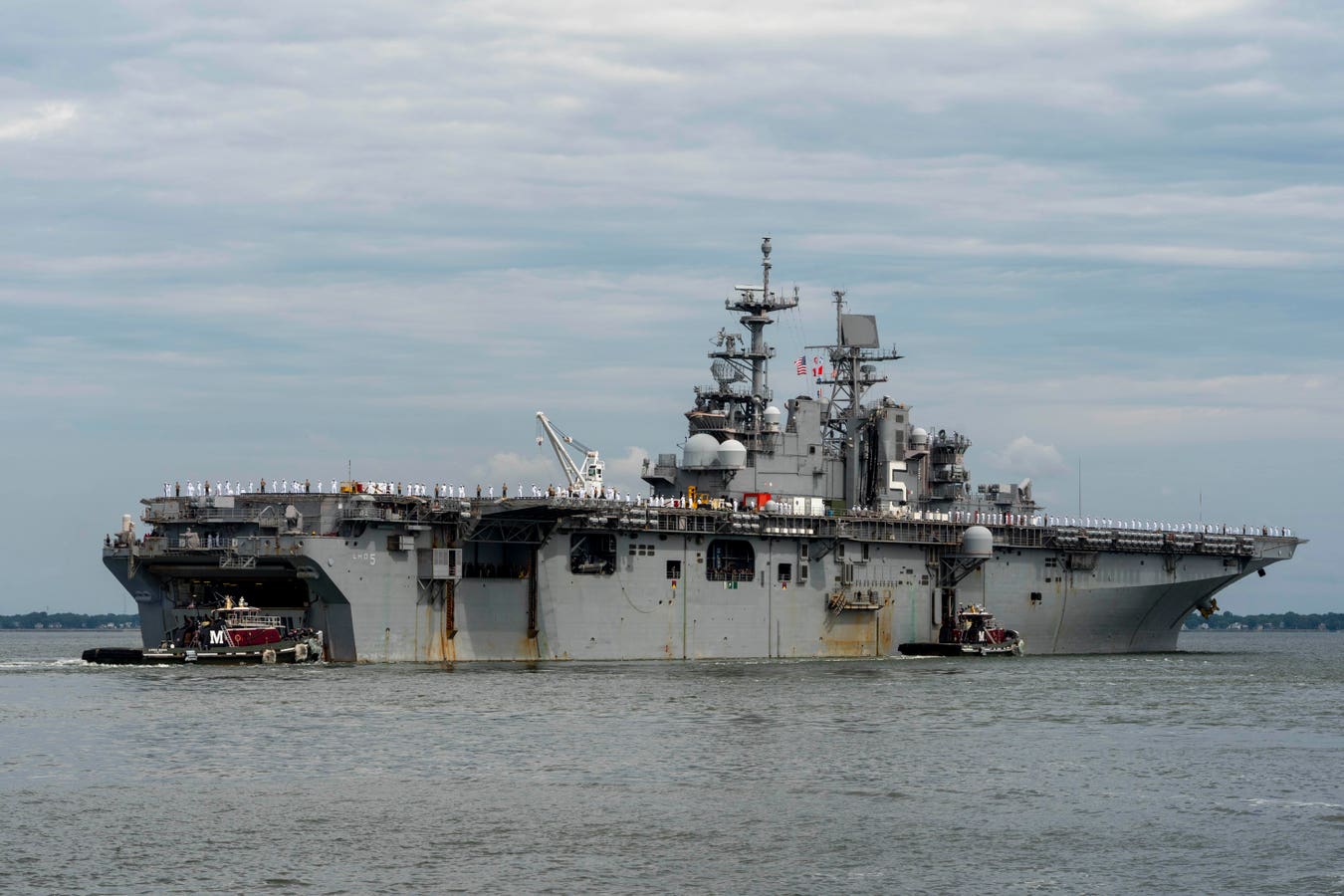The Biden administration’s response to Hamas atrocities in Israel is the latest proof that America is the world’s only true military superpower.
Within hours after the scale of the threat to Washington’s most important Middle East ally became apparent, steps were in progress to quickly deliver needed munitions, bolster U.S. air power in the region, and expand an already robust military aid program.
The administration also launched a vigorous diplomatic effort to demonstrate its commitment to Israeli security, sending the Secretary of State, the Secretary of Defense, and ultimately the President himself to high-level meetings in the Jewish state.
No other nation is capable of delivering so much support so quickly to an embattled ally thousands of miles from its homeland. The logistical capability simply doesn’t exist in countries like Russia and China, which is why they tend to deploy their forces close to home.
However, among the many strands in a complex response to regional conflict, one facet stands out as by far the most important in deterring the spread of war and demonstrating resolve: the deployment of overwhelming naval power.
As of October 19, a dozen days after the Hamas attacks began, the Pentagon had dispatched:
- A carrier strike group consisting of the USS Gerald R. Ford nuclear-powered aircraft carrier and five surface combatants, including four Arleigh Burke-class destroyers.
- A second carrier strike group, led by the nuclear-powered USS Dwight D. Eisenhower aircraft carrier, that included four surface combatants
- An amphibious ready group comprised of an assault ship and two dock landing ships, collectively hosting the 2,200 personnel of the 26th Marine Expeditionary Unit.
- One or more attack submarines capable of collecting diverse intelligence from in and around Israel, and providing protection to the aforementioned surface vessels.
I’m speculating about that last item, but in such a conflict it would be standard practice to deploy undersea warships that can eavesdrop on the communications frequencies favored by terrorists and local navies without being detected.
As far as the surface vessels are concerned, they represent the most powerful naval force that any nation in the world is capable of deploying. A Ford-class carrier can sustain over 200 aircraft sorties per day in a crisis. Its air wing includes four squadrons of fighters—each of which can precisely attack multiple targets in a single sortie—and separate squadrons of airborne reconnaissance aircraft and electronic jammers for shutting down hostile radar and radios (including cell phones).
A Nimitz-class carrier such as the Eisenhower is somewhat less efficient than a Ford class, but still capable of destroying any concentration of hostile forces within days. Both carriers now deployed in the eastern Mediterranean have unlimited range thanks to their nuclear propulsion and can operate for months without resupply. Their carrier wings can sustain total air dominance in the region indefinitely.
The seven Arleigh Burke-class destroyers accompanying the carriers are the world’s most advanced air and missile defense warships, capable of simultaneously defending against undersea, surface and overhead threats. They also have a potent capacity to attack land targets thanks to their long-range cruise missiles.
The amphibious assault ship that serves as the flagship of the Marine ready force, the USS Bataan, hosts rotorcraft and jump-jets (vertical-takeoff and landing fighters) that can land anywhere they are needed without requiring a runway. All three “amphibs” in the ready group are designed to cope with precisely the kind of contingency that Hamas aggression represents.
Marines train continuously for this kind of combat, although there is no sign that Israel will require direct support from U.S. troops to suppress the threat posed by Hamas in the south or Hezbollah in the north.
However, Israel is situated in a rough neighborhood, and its borders are not optimized for defense. If other countries in the region sought to take advantage of the current situation, the Jewish state could find its forces challenged on multiple fronts.
The massive naval presence dispatched by the Biden administration thus has one overriding purpose: to prevent the conflict from spreading by threatening consequences for any new aggressors. As Pentagon spokesperson Sabrina Singh puts it, “Our main goal is to send a message of deterrence.”
This is the main reason the U.S. Navy continuously deploys its warships in places like the Western Pacific and Persian Gulf—not to fight wars, but to deter wars. However, as Edward Gibbon said of the Romans, “They preserved peace through a constant preparation for war.”
That’s the way the Navy and Marine Corps think about readiness: you can’t deter unless you are prepared to fight and win. So U.S. naval forces aren’t just the best equipped in the world, they are the best trained. Few militaries elsewhere can aspire to a similar degree of discipline.
Of course, America’s Army and Air Force exhibit similar discipline. But here’s the different in a place like the Middle East: they can’t operate without bases on land—land owned by countries that might not share Washington’s enthusiasm for Israeli security.
Therein lies the single most important feature of a sea-based force. It doesn’t require the permission of other countries in order to show up and operate continuously in war zones. Moreover, its bases are constantly on the move, and thus less vulnerable to attack than fixed-site bases on land.
With most of the world’s population located within a hundred miles of the sea, naval forces thus offer the best mix of capabilities for coping with regional crises such as that now unfolding in Israel. Without a highly flexible and versatile navy, America could not be the kind of military superpower it has become.
Several companies that build warships and other naval equipment contribute to my think tank.
Read the full article here





